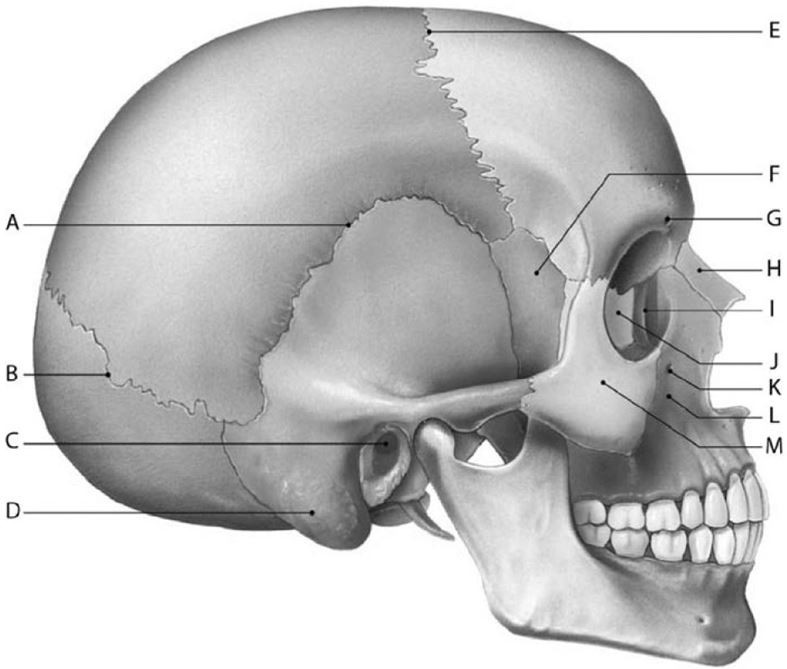Structure J is the

A) nasal.
B) lacrimal.
C) maxilla.
D) ethmoid.
E) palatine.
D) ethmoid.
You might also like to view...
The vitreous body
A) fills the anterior chamber. B) helps to stabilize the eye and holds the retina up against the eyewall. C) is replaced at the rate of 20 percent per year until middle age. D) circulates through the pupil. E) holds the retina against the lens for proper refraction.
Match the following reflexes to their function:
A) Plantar B) Crossed-extensor C) Flexor D) Stretch E) Golgi tendon 1) Tests both upper and lower motor pathways. The sole of the foot is stimulated with a dull instrument. 2) Consists of an ipsilateral withdrawal reflex and a contralateral extensor reflex; important in maintaining balance. 3) Produces a rapid withdrawal of the body part from a painful stimulus; ipsilateral. 4) Prevents muscle overstretching and maintains muscle tone. 5) Produces muscle relaxation and lengthening in response to tension; the contracting muscle relaxes as its antagonist is activated.
Define the peripheral nervous system
What will be an ideal response?
How does the muscular system contribute to osteoporosis?
A. blood clotting starts repair process B. inadequate amounts of calcium and vitamin D in the diet C. calcitonin is used to treat osteoporosis D. pain following injury helps prevent further injury E. lack of exercise reduces muscle stress on bone